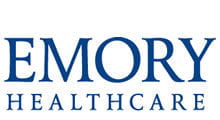ChlorihexiScan is a real-time CHG skin concentration feedback system to reduce hospital-acquired infections
Student Team: Squeaky Clean
Aaron Toporek (LinkedIN, Resume) ; Andrew Payton (LinkedIN, Resume) ; Cody Schoenfuss (LinkedIN, Resume) ; Taylor Holtzclaw (LinkedIN, Resume);
Sponsor:
Scott, Fridkin, MD, Emory University Hospital
Project Description:
Roughly 1.7 million patients each year suffer from a hospital-acquired infection after admittance, resulting in about 99,000 deaths. Chlorhexidine is a chemical used in various soaps and wet wipe products as an infection prevention measure. The use of these products to “bathe” patients has been shown to reduce hospital-acquired infection rates by as much as 28% compared to normal soap and water. However, full skin coverage is often not achieved for various reasons, including improper bathing technique and lack of instruction. Currently, there are no commercially available products that allow for quality checking on administered chlorhexidine baths. A laboratory protocol for a colorimetric assay exists to determine chlorhexidine skin concentrations at different locations on the body, but this assay has several problems, such as a lack of concrete test results, an inefficient procedure, and low feasibility of use in a hospital setting. ChlorhexiScan provides an innovative solution that is safe and easy to use. This is the first bedside test that can be easily utilized in hospital rooms and the procedure would seamlessly integrate with nurses’ schedules. With the quantitative output of skin chlorhexidine concentration and the immediacy of output acquisition, nurses will be able to perform quality checks on administered chlorhexidine baths to ensure maximum patient safety while saving money, effort, and lives. This will also eliminate the prolonged process of performing laboratory work on the swab samples and receiving the results up to a month later. Moving forward, we intend to combine our looks-like and works-like prototypes into one high-quality, fully-functional device that can eventually be used to fight hospital-acquired infections in hospitals around the country.



